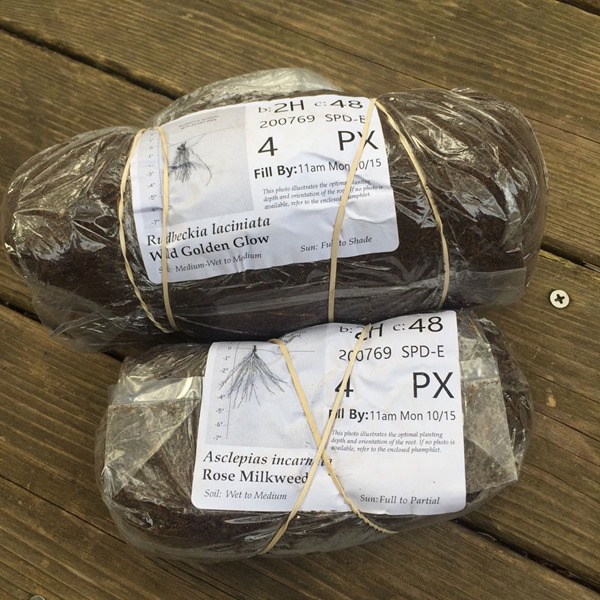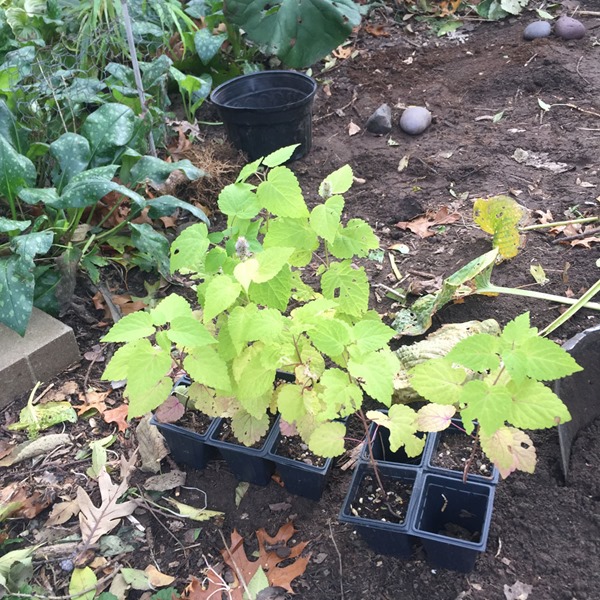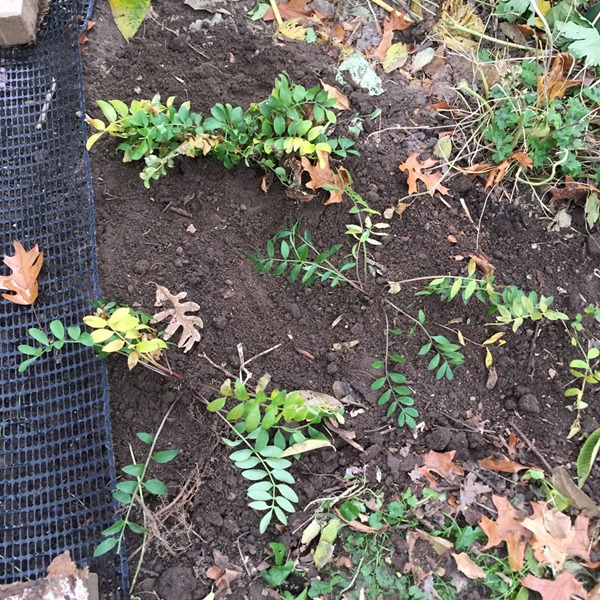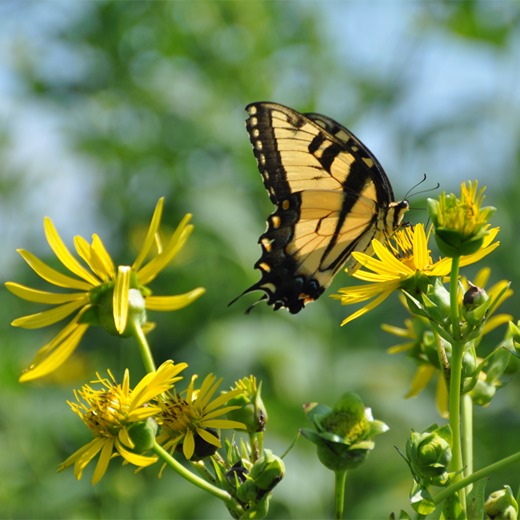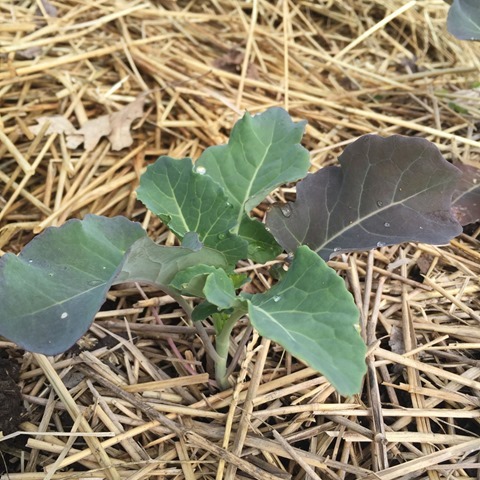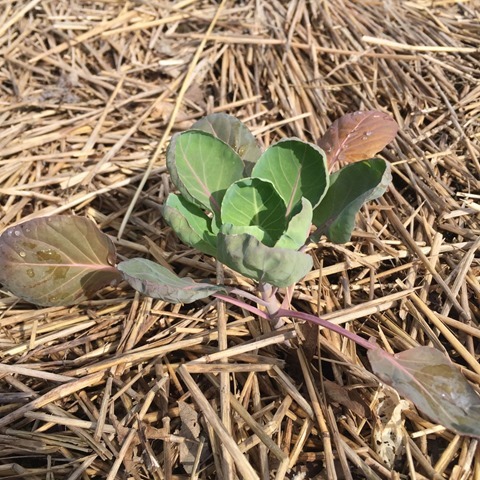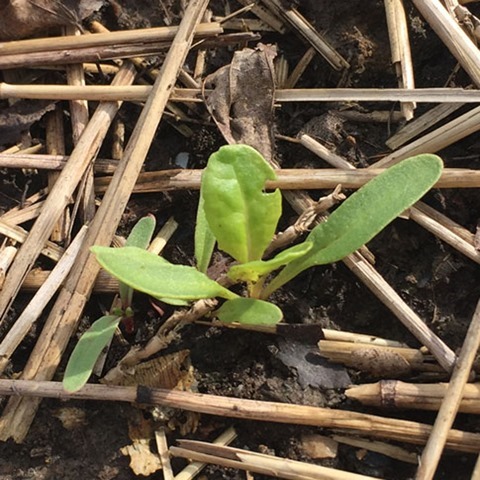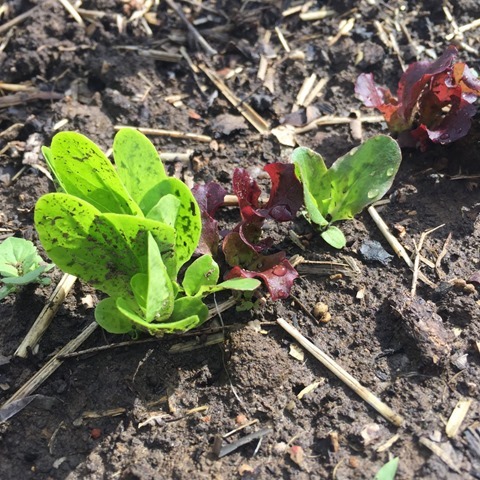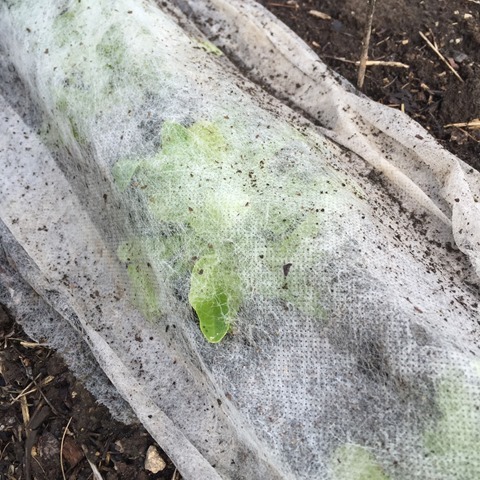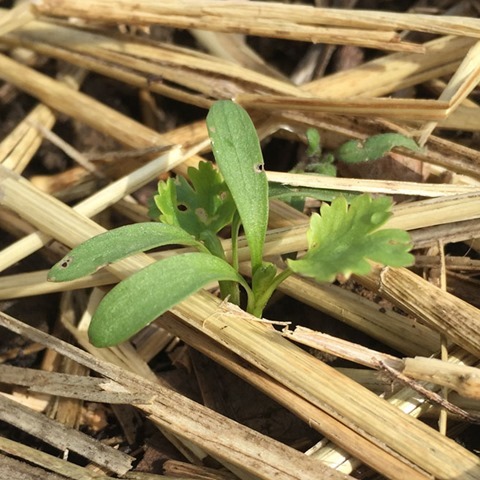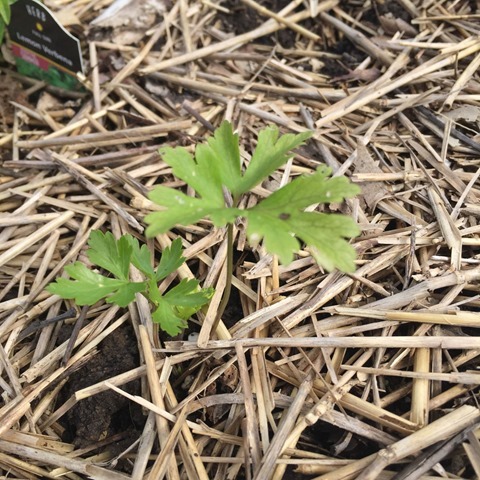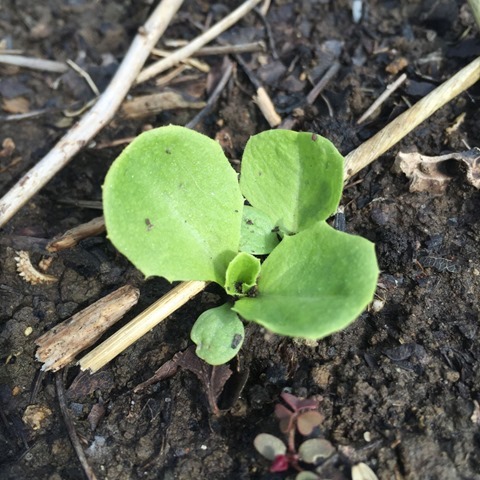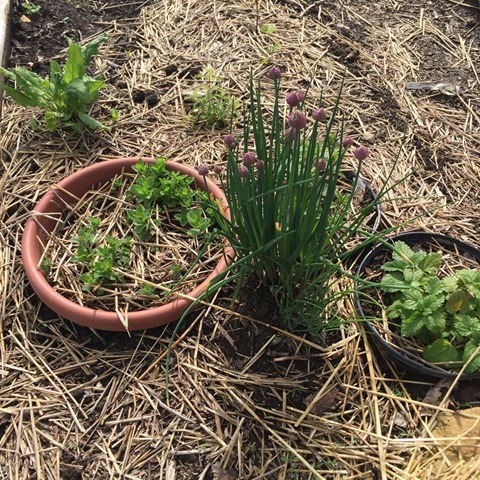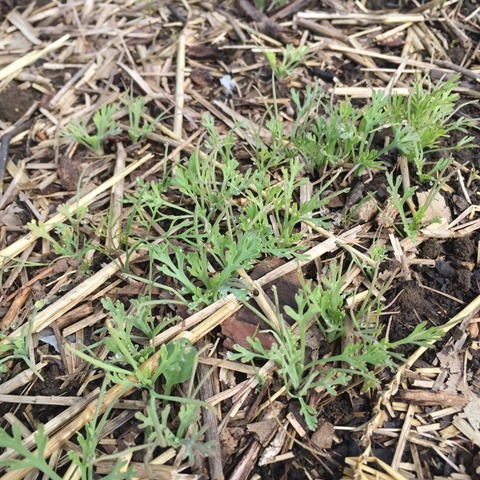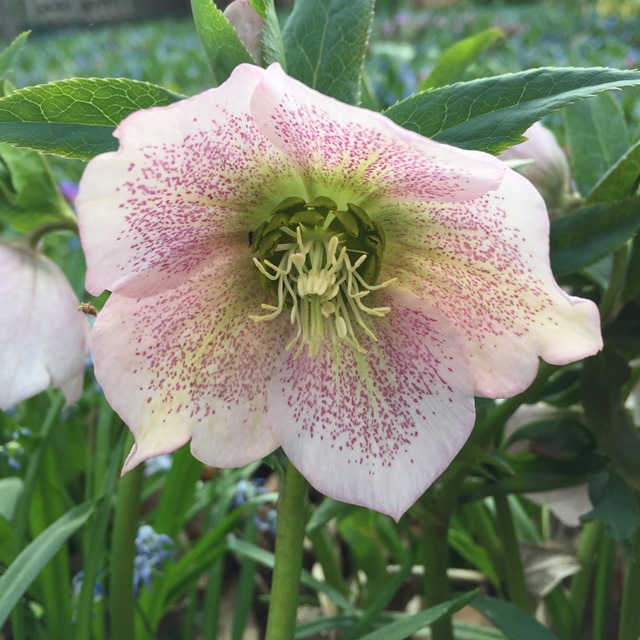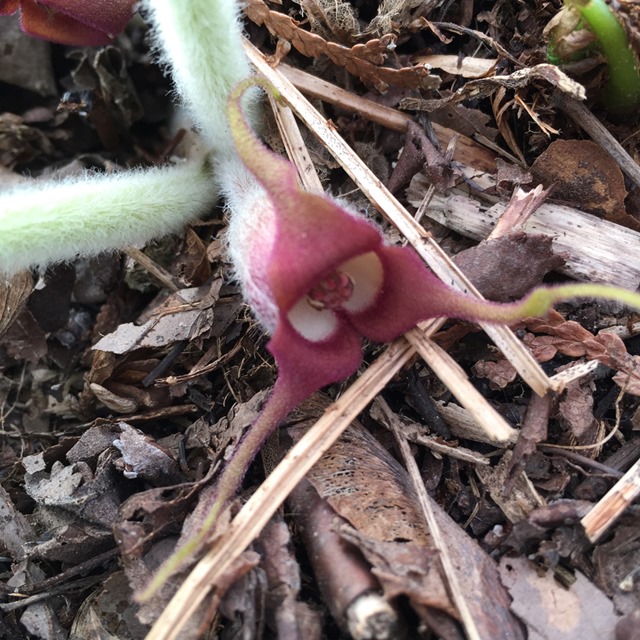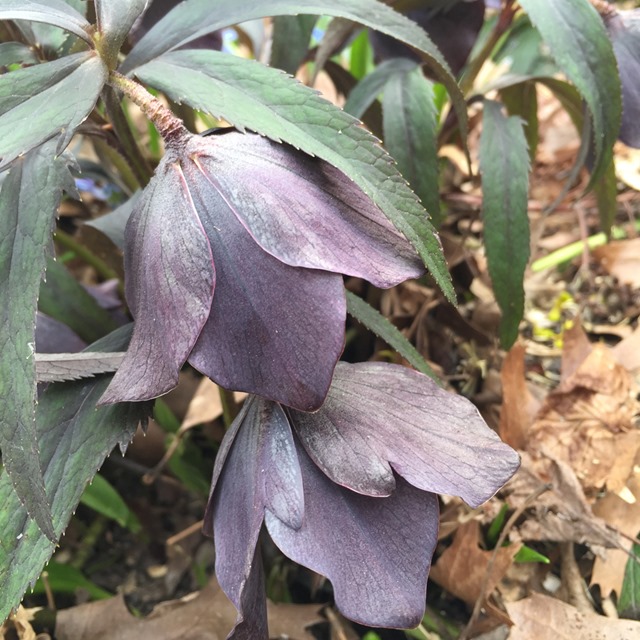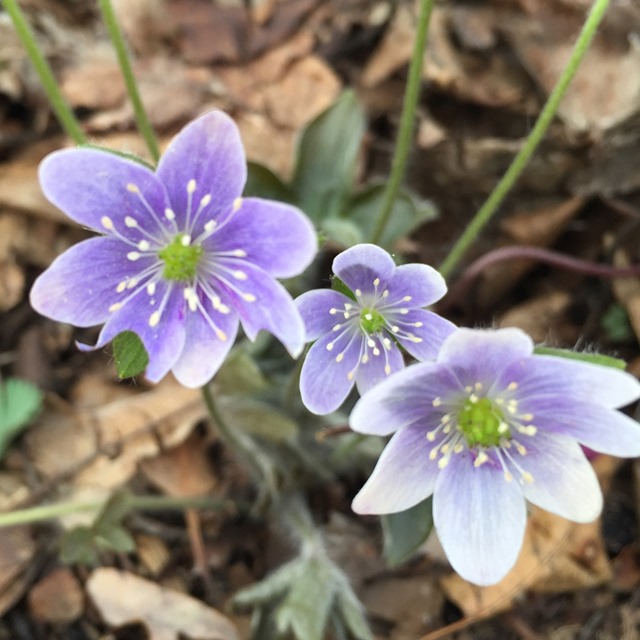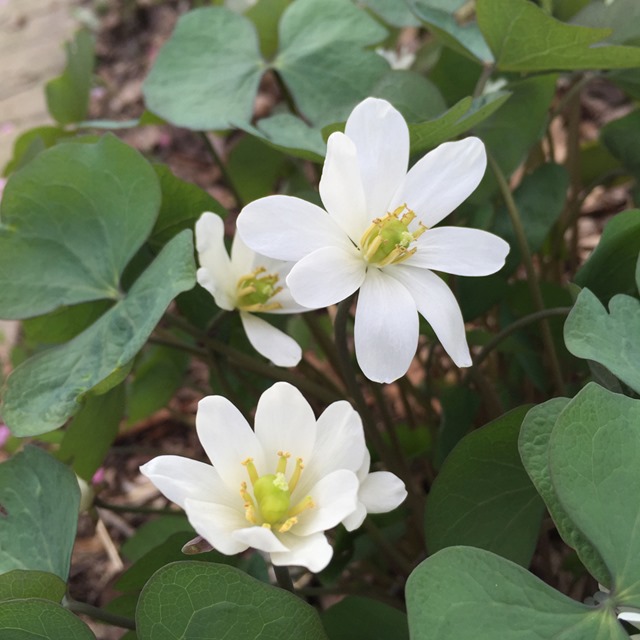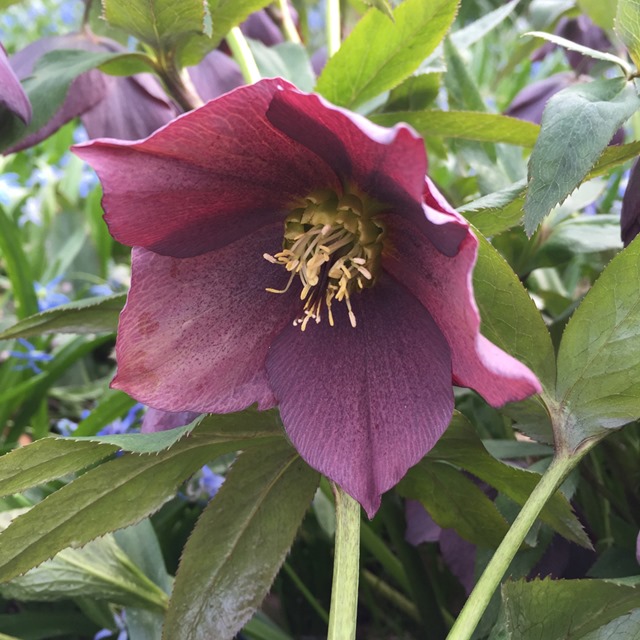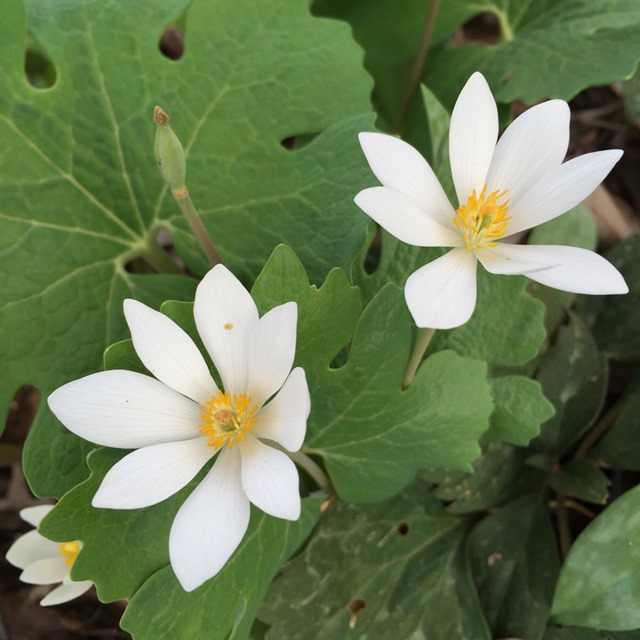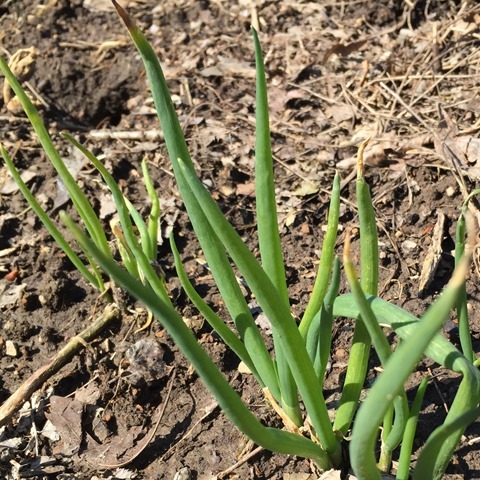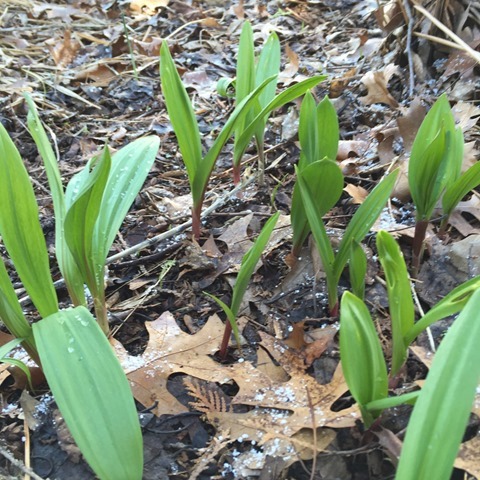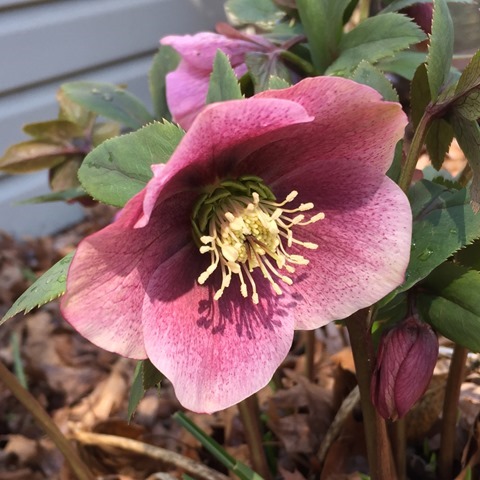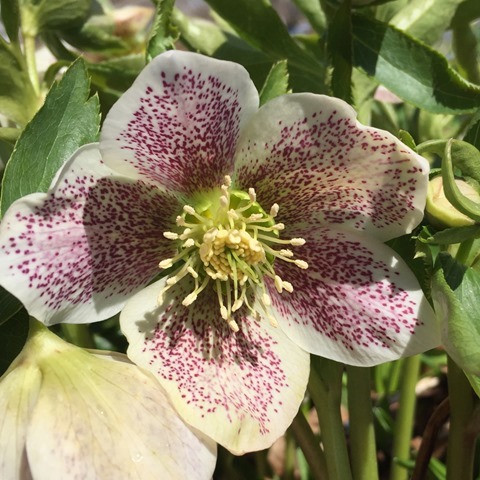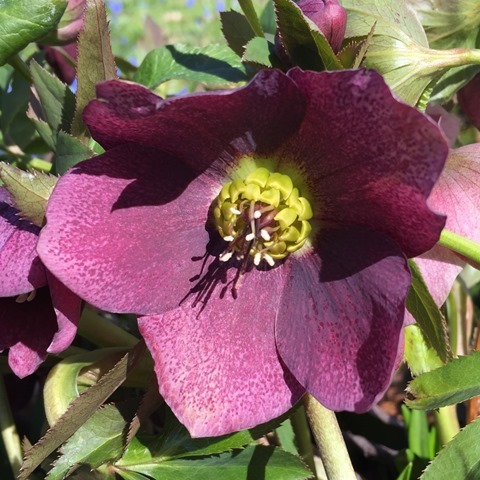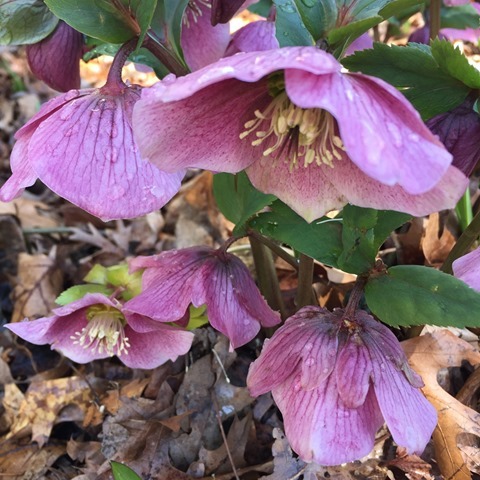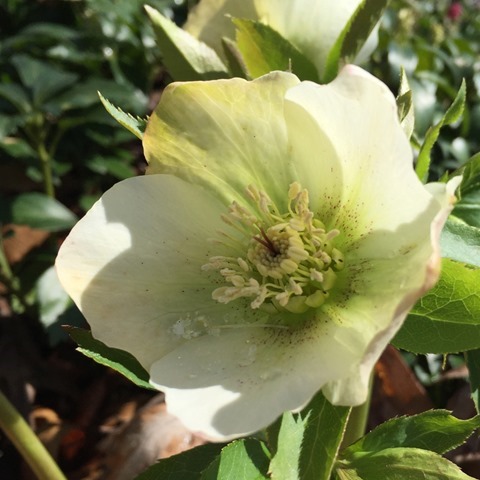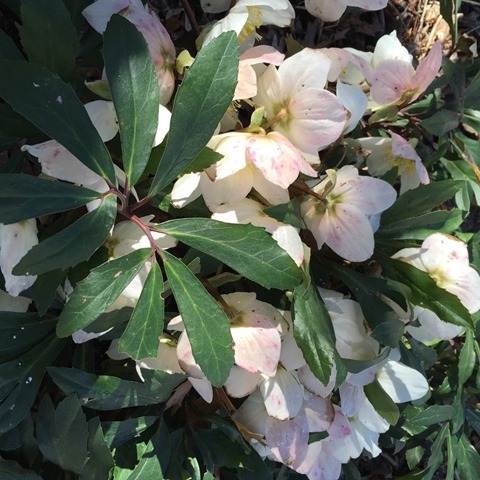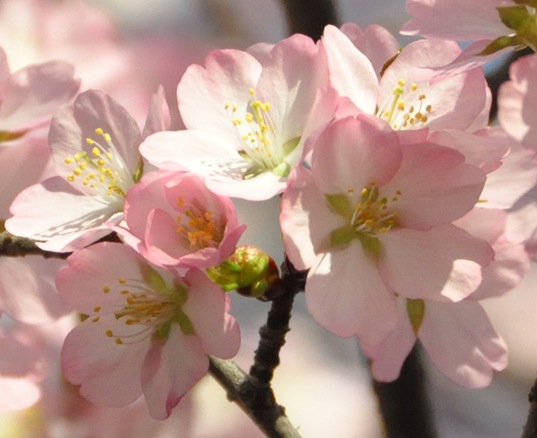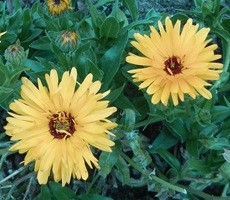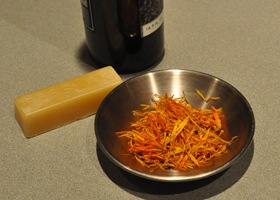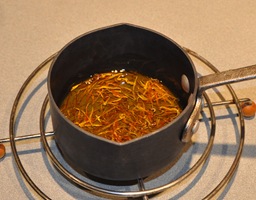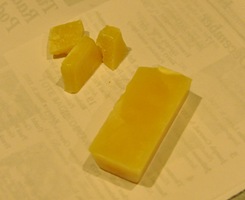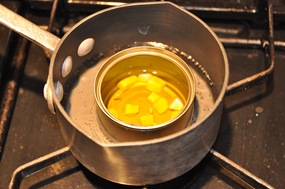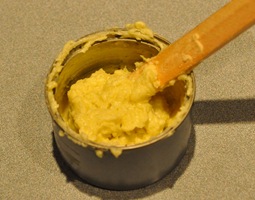Over a year ago I dug into converting my perennial gardens to include more native plants as resources for pollinators. The first thing I did was dig out several large patches of bugbane (Actaea sp.) to make room for more of a variety of species. While the bugbane was actually a favorite of the bumble bees, it was a prolific seeder and it’s high, dense leaves crowded out many other plants. I did keep one small patch contained between the house and a brick patio, but the rest I tore out with a vengeance, along with a couple other weedy species. I then covered the area with a double layer of cardboard that stayed in place through the fall, winter, spring and summer until I took it up only recently.
Between the cardboard treatment and the strategic relocation of the Eutrochium and a couple of Hosta I ended up with three decent-sized areas of bare ground waiting for me to plug in new plants.
I had bare-root Rudbeckia laciniata and Asclepias incarnata I got from Prairie Moon Nursery. The plants were very robust so I expect them to be awesome next season.
I also had several Agastache foeniculum in pots I grew from seed as well as seed-grown plugs of Allium cernuum, Elymus hystrix, and Symphyiotrichum shortii.
To round out the variety a friend gifted me a boxful of excess Polemonium reptans from her garden and I purchased some end-of-season sale Monarda of some cultivar whose name escapes me at the moment. It will be interesting to watch for visitors to the Monarda as there is a discussion going on currently in some circles about the attractiveness to pollinators of cultivated varieties of native plants.
Since digging squirrels are an ongoing problem at Brakewynde I covered the most vulnerable of the transplants with plastic hardware cloth. The smaller plants were going dormant anyway so I just gently bent them to the side. The bare-root transplants had taller, stiffer stems so I placed cobbles on either side of each one to keep the plastic from crushing them.
After the transplanting was complete we had several days of gentle rain showers to help settle them in and then the leaves fell in earnest providing an insulating layer. My intention is to get the plastic off next spring as soon as shoots start to appear. Despite having quite a few plants there is still space to fill so I’m going to spend some time this winter prioritizing which species I will be obtaining early next year. I’m very much looking forward to enjoying a greater variety of blooms in 2019 and, with any luck, a greater volume and variety of visiting bees, hoverflies, butterflies, moths and beetles.


